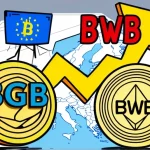Spain’s 2025 Crypto Regulations: Innovation Meets Strict Oversight

Crypto Regulations in Spain 2025: Mainstreaming Innovation with a Heavy Hand
Spain is making bold moves in the cryptocurrency space for 2025, tightening its regulatory grip while aiming to position itself as a leading fintech hub in Europe. With accelerated compliance to EU standards, banking giants stepping into crypto services, and a hardline stance on taxes and fraud, the country is walking a tightrope between fostering blockchain growth and enforcing strict oversight.
- Early MiCA Compliance: Spain targets full alignment with the EU’s Markets in Crypto Assets (MiCA) regulation by December 31, 2025, ahead of schedule.
- Banking Breakthrough: BBVA rolls out Bitcoin and Ether trading for retail users, signaling mainstream adoption.
- Tax and Fraud Crackdown: New tax rules allow crypto seizures for debts, while authorities dismantle major scam networks.
Mainstreaming Crypto: BBVA Leads the Charge
Picture this: logging into your bank app and buying Bitcoin with a few taps. On July 4, 2025, Banco Bilbao Vizcaya Argentaria (BBVA), one of Spain’s largest financial institutions, made this a reality by launching Bitcoin and Ether trading and custody services for retail customers. This isn’t some shady exchange operating in the shadows; it’s a trusted bank with a decade of blockchain experience, integrating crypto directly into its mobile platform. Gonzalo Rodríguez, Head of Retail Banking for Spain at BBVA, emphasized the simplicity of the move:
We want to make it easier for our retail customers in Spain to invest in crypto-assets, through a simple and easy-to-access digital solution on their cell phone.
Francisco Maroto, Head of Digital Assets at BBVA, echoed the broader goal:
Our aim is to offer the best investment and transaction-based solutions to our customers.
Notably, BBVA isn’t peddling investment advice—a deliberate choice to avoid fueling speculative mania. This aligns with Spain’s cautious yet progressive push to bring digital assets into the financial mainstream while prioritizing consumer protection. With prior crypto ventures in Switzerland and Turkey, BBVA’s entry into Spain’s market could be a game-changer for hesitant adopters wary of unregulated platforms.
Regulatory Overhaul: MiCA and the Push for Stability
Behind BBVA’s rollout lies a larger framework driving Spain’s crypto agenda: the Markets in Crypto Assets (MiCA) regulation. For those new to the term, MiCA is the EU’s comprehensive rulebook for cryptocurrencies, designed to ensure market transparency, investor safety, and stability by setting standards for issuers and service providers like exchanges. Spain is fast-tracking full compliance by December 31, 2025—six months ahead of the EU’s July 1, 2026 deadline. Stablecoin rules under MiCA were already phased in by mid-2024, with broader asset regulations following by year-end 2025. This early adoption isn’t just about ticking boxes; it’s a signal that Spain wants to lead as a regulated fintech powerhouse, blending innovation with discipline, as detailed in discussions on MiCA compliance challenges.
But let’s not get too starry-eyed. MiCA means serious business for Crypto Asset Service Providers (CASPs)—think exchanges or custodians. To operate in Spain, they must secure a license from the Spanish National Securities Market Commission (CNMV). This isn’t a simple form; it requires a physical office in Spain, a corporate bank account approved by the Central Bank of Spain, a detailed business plan, and strict adherence to anti-money laundering (AML), counter-terrorism financing (CFT), and know-your-customer (KYC) protocols. These are basic checks to prevent illicit activity, but for smaller startups or decentralized projects, the costs and red tape could be a death knell. Is this regulation or a barrier to entry disguised as protection? For a broader overview, check the global legality of cryptocurrency.
Taxman Targets Crypto: DAC8 and Capital Gains Bite
Spain’s tax authorities aren’t messing around either. Under the Eighth Directive on Administrative Cooperation (DAC8), effective January 1, 2026, the tax agency will have the power to seize cryptocurrency holdings and other digital assets from users with unpaid tax debts. DAC8 is a tax transparency rule forcing CASPs to report user data to authorities, even applying to non-EU platforms serving Spanish clients. While full reporting might not kick in until 2027, the threat of asset seizure is already a wake-up call, with expert analysis on DAC8 enforcement shedding light on its impact. Add to that the existing capital gains tax on crypto transactions for 2025, and the financial burden becomes clear. Here’s how it breaks down:
- Up to €6,000: 19%
- €6,001–€50,000: 21%
- €50,001–€200,000: 23%
- €200,001–€300,000: 27%
- Above €300,000: 28%
That’s not all—wealth taxes ranging from 0.2% to 3.75% apply to net wealth over €700,000, and income taxes on mining or staking rewards can hit 24% to 47%. Annual reporting by June 30 is mandatory, with penalties for non-compliance. Spain’s taxman isn’t just knocking; he’s ready to raid your wallet if you’re not square. For a deeper dive into these rules, refer to this guide on Spain’s crypto tax policies. For investors dreaming of untouchable crypto gains, this is a harsh reality check. Could this push users to less regulated regions or underground solutions?
Crypto Boom: Adoption Soars Amid Oversight
Despite the regulatory hammer, Spaniards are diving into crypto at a staggering pace. Current user penetration stands at 50.97%, projected to climb to 53.08% by 2026, translating to over 25 million users, according to industry data like Statista. Revenue per user averages US$54.3, with total crypto revenue in Spain hitting US$1.3 billion in 2025 and expected to surge to US$2.4 billion by 2026—an 85.27% growth spurt. What’s driving this? Economic uncertainty, youth interest in alternative investments, and lingering distrust in traditional finance post-2008 might be fueling the trend. For Bitcoin specifically, this adoption could solidify its status as the go-to digital asset, though altcoins likely carve out niches too. Insights on how blockchain adoption impacts banks provide context to this trend. But rapid growth isn’t all sunshine—more users mean more targets for scams, a risk Spain is keenly aware of.
Fraud and Security: Zero Tolerance for Scammers
On June 25, 2025, the Spanish Guardia Civil, with backup from the U.S., Estonia, and France, busted a crypto fraud network that swindled over 5,000 victims across Europe. While exact losses aren’t public, the operation targeted a sophisticated scam—likely a Ponzi scheme or fake investment platform—traced partly through blockchain’s transparency, which cuts both ways for criminals. This crackdown isn’t a one-off; it’s a loud statement of Spain’s no-nonsense stance on predatory schemes. They’re not just protecting users but sending a warning to shady operators: mess with Spaniards, and you’ll regret it. Still, could such aggressive enforcement spook legitimate projects fearing regulatory overreach? It’s a fine line between security and stifling trust. For more on Spain’s evolving regulatory stance, explore updates on crypto regulations for 2025.
Implications for Decentralization: A Bitcoin Maximalist Dilemma
For Bitcoin purists, Spain’s 2025 framework is a mixed bag. On one hand, BBVA’s Bitcoin trading legitimizes BTC as an asset class, potentially onboarding millions to the network. On the other, heavy KYC requirements, tax oversight, and centralized compliance clash with Satoshi Nakamoto’s vision of financial freedom. Could this drive users toward self-custody with non-custodial wallets or peer-to-peer trading on platforms like the Lightning Network, sidestepping regulatory nets? Ironically, overregulation might boost Bitcoin’s appeal as a censorship-resistant haven—though at the risk of pushing activity underground. For a detailed look at the regulatory timeline, see this comprehensive guide to Spain’s 2025 crypto rules.
And what about decentralized finance (DeFi) and altcoin ecosystems? Spain’s focus on centralized CASPs and strict licensing leaves little wiggle room for Ethereum-based protocols or smaller blockchains to innovate. Physical office mandates and AML burdens could marginalize truly decentralized projects, limiting niches Bitcoin isn’t built to fill—like smart contracts or tokenized assets. While Spain champions fintech, its framework might inadvertently favor big players over the rebellious underdogs that birthed crypto’s ethos.
Walking the Tightrope: Opportunity vs. Overreach
Spain’s crypto regulations in 2025 are a high-stakes experiment. Moves like BBVA’s retail services and skyrocketing adoption scream opportunity, positioning the country as a regulated gateway for digital finance in Europe. Yet the tax sledgehammer, compliance gauntlet, and extraterritorial rules under DAC8 risk alienating investors and innovators alike. Spain isn’t recognizing crypto as legal tender—unlike El Salvador’s Bitcoin experiment—but seeks disciplined integration. Can it harness blockchain’s potential without choking the freedom that defines it, or will heavy-handed oversight drive talent and capital elsewhere?
Key Questions and Takeaways on Spain’s Crypto Regulations in 2025
- Why is Spain accelerating MiCA compliance to 2025?
Spain wants to lead as a regulated fintech hub in the EU, prioritizing market stability and consumer trust by adopting MiCA rules six months before the 2026 deadline, setting a standard for others. - How does BBVA’s Bitcoin trading rollout boost adoption?
By embedding Bitcoin and Ether trading in a trusted bank app, BBVA lowers barriers for everyday Spaniards, likely accelerating mainstream trust in crypto over sketchy, unregulated platforms. - Are Spain’s crypto taxes a dealbreaker for investors?
Quite possibly—with capital gains taxes up to 28% and asset seizure under DAC8, the financial and reporting burdens could deter high rollers or casual users from engaging fully. - Can smaller crypto businesses survive Spain’s licensing rules?
Many won’t. Requiring local offices and strict AML/KYC compliance favors well-funded firms, potentially sidelining startups and decentralized projects vital to blockchain’s growth. - What’s the risk of fraud in Spain’s crypto surge?
High adoption invites predators, but Spain’s crackdowns—like the Guardia Civil busting a 5,000-victim scam network—show a hardline approach, even if it risks scaring off legitimate players. - How do these rules impact Bitcoin’s decentralization ethos?
While BBVA’s BTC trading adds legitimacy, intense oversight conflicts with Bitcoin’s freedom-first roots, possibly pushing users to self-custody or P2P solutions beyond regulatory reach. - Is there space for DeFi and altcoins in Spain’s framework?
Barely—Spain’s centralized focus and compliance costs may marginalize Ethereum-based DeFi and smaller chains, restricting innovation in areas Bitcoin doesn’t directly serve. - Will Spain’s regulations set a global precedent?
Potentially. As a fintech leader, Spain’s balance of innovation and control could influence other nations, though overreach risks driving crypto activity to less restrictive jurisdictions.

